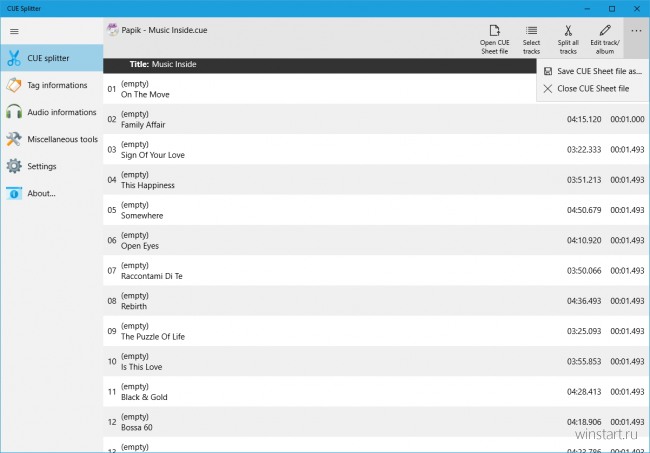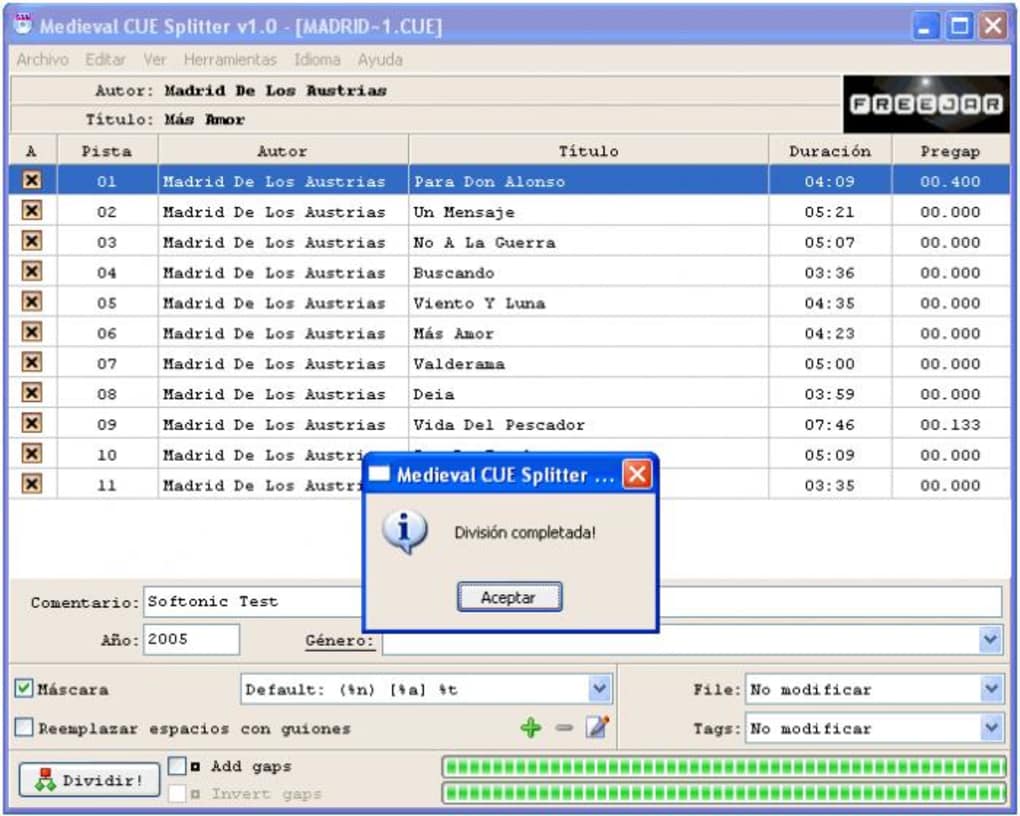

When importing everything to Roon, I just added the CUE file as an Alternative version of the main album so my library looks clean.įor DSD ISO, I used ISO2DSD which works like a charm and for the two ISOs that would not convert, I again used JRiver to convert to DSD. I did not pick up any loss of quality on the converted albums.

By choosing to convert 1 track at a time solved this issue. I initially selected the setting to convert 2 files at the same time, but found that with very large 24bit albums, JRiver would not convert every file. This was definitely helpful and saved a lot of time. This worked for both 16bit and 24bit flac cue files. It has an option to store tracks in the original album folder, or to create a new folder. I selected all the albums and converted the format to FLAC. I started off using CUE Tools, but found that I couldn’t get it to store the files in the original album folder, without manually pointing to it. Times = ''.Just thought I’d give some feedback as to the process that I followed. So I ended up writing a script for spliting APE file by parsing the CUE file and converting the APE file to FLAC files separated by titles using ffmpeg: #!/usr/bin/env python2.7ĮncodingList = ('utf-8','euc-kr', 'shift-jis', 'cp936', 'big5')
#Cue splitter to flac mac
Normally ffmpeg would still convert the file completely while mac very likely throws an error during the processing. I found mac (which is the command that shntool used for decoding APE files) is way less tolerant than ffmpeg if the source file contains minor errors. cue file will reference the split audio files. This cue sheet conversion is the main advantage over using shntool the new. If all goes well, CUETools will write the converted audio file(s) and a converted cue sheet to a new folder. This window will remain open until you click its close button. The command will exit immediately, and a small GUI window will open to show you the progress and any error messages.


On the command line, you can now run it with those settings: CUETools /convert infile.cue Now close the GUI your settings are saved automatically. In the Advanced Settings (gear icon in upper right corner), CUETools tab, Gaps handling, choose either Gaps Appended or Gaps Appended + HTOA, depending on whether you want any audio that comes before track 01 to be saved to a separate file or discarded (normally it'll just be a split-second of silence). Set the Audio Output to what type of audio files you want. In the Mode section, choose Tracks, and uncheck the AccurateRip box, unless you want it to verify before converting. If the Action section isn't greyed out, make sure it's on Encode, with the "default" script selected. Take note of the Template in the CUE Paths section this defines where the new files will go. trackfs only recognize the flac file, but not FLAC file, when I rename the file. This one is also not important but I found it in the last version. This doesnt matter if the point 1 can be solved. In the GUI, choose the "convert" profile (chooser is in the upper left corner). This point is exactly related to point 1, if the files are some subtracks and a cue file, the subtracks also wont be mounted in the mount point. It's primarily a GUI app, and it can't easily be configured from the command line, but it does have a command-line interface you can use to invoke the conversion with settings that were established in the GUI.
#Cue splitter to flac software
The most popular and robust software for doing this on Windows is CUETools, which is free.


 0 kommentar(er)
0 kommentar(er)
